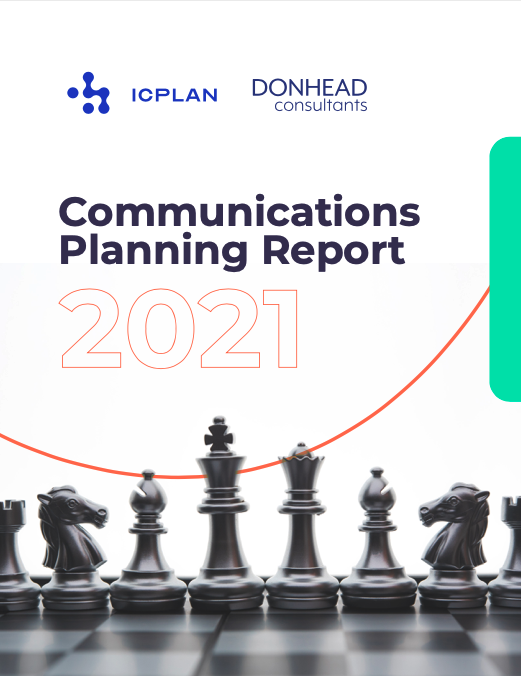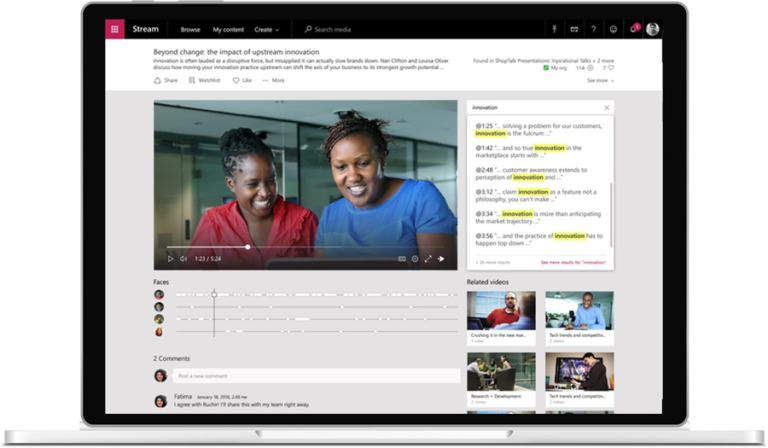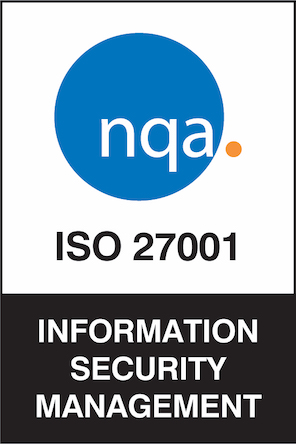Unlock the full potential of your organisation with successful internal communications campaigns
With the increasing complexity of today’s business landscape, effective communication within a company has become more important than ever before. It’s essential to have a well-thought-out strategy and plan in place to ensure your internal communications campaigns are successful. In this blog post, we will discuss the unique challenges of internal communications, the importance of strategy and planning, and tips for creating successful campaigns. By incorporating these insights, you can drive employee engagement, improve collaboration, and enhance overall business performance.
Unique Challenges of Internal Communications
Diverse Audiences
One of the main challenges in internal communications planning is catering to diverse audiences. Companies often have employees with different roles, responsibilities, and levels of authority. This makes it necessary to tailor your messaging to resonate with each group effectively. Understanding the needs, preferences, and expectations of various employee segments is crucial in crafting targeted and relevant content and it’s worth taking the time to map out audiences at the beginning of a campaign in order to maximise engagement throughout the campaign.
Information Overload
The digital era has brought an influx of information, making it increasingly difficult for employees to keep up with the constant stream of updates and announcements. Information overload can lead to disengagement and decreased productivity. Too often, the answer is to try a new channel but an effective internal communications strategy can help you find the right balance between providing essential information and avoiding overwhelming employees.
Remote and Hybrid Workforces
The rise of remote and hybrid workforces presents new challenges for internal communications planning. With employees spread across different locations and time zones, ensuring consistent and clear communication becomes more difficult. Remote workers may feel disconnected from their colleagues, leading to a sense of isolation and decreased engagement.
Rapidly Changing Business Environments
Today’s business world is characterized by constant change and evolution. As a result, internal comms must be agile and adaptable to keep employees informed about organisational changes, new initiatives, and shifting priorities. This requires a proactive and flexible approach to planning with a willingness to iterate on strategies when necessary.
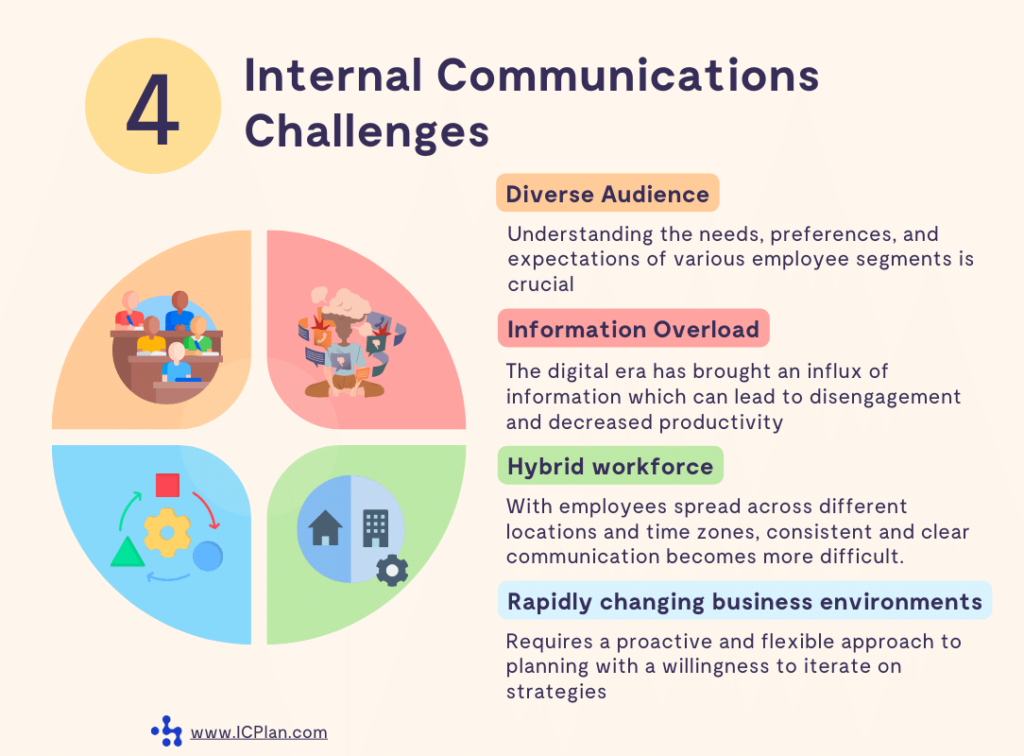

The Importance of Strategy and Planning
Aligning with Organisational Goals
A well-defined internal communications strategy is essential for aligning your efforts with the overall goals of your organisation. By setting clear objectives and KPIs, you can ensure that your communications campaigns contribute to driving business success. This alignment also helps to secure buy-in from leadership and other key stakeholders.
Enhancing Employee Engagement
Effective internal communications planning is critical for fostering employee engagement. Engaged employees are more productive, motivated, and committed to the success of the organisation. By delivering targeted and relevant content that resonates with each audience, you can create a strong sense of connection and purpose among your employees.
Facilitating Collaboration and Innovation
A strategic approach to internal communications planning can help break down silos, encourage cross-functional collaboration, and promote innovation within your organisation. By creating a culture of open communication, you empower employees to share ideas, provide feedback, and contribute to the company’s growth.
Managing Change and Crises
In times of change or crisis, a well-structured internal communications plan can help maintain stability and ensure that employees are informed, engaged, and supported. By providing timely and transparent updates, you can build trust, manage expectations, and guide your workforce through challenging times. Set time aside to create a template for crisis communications so you have it when you need it.
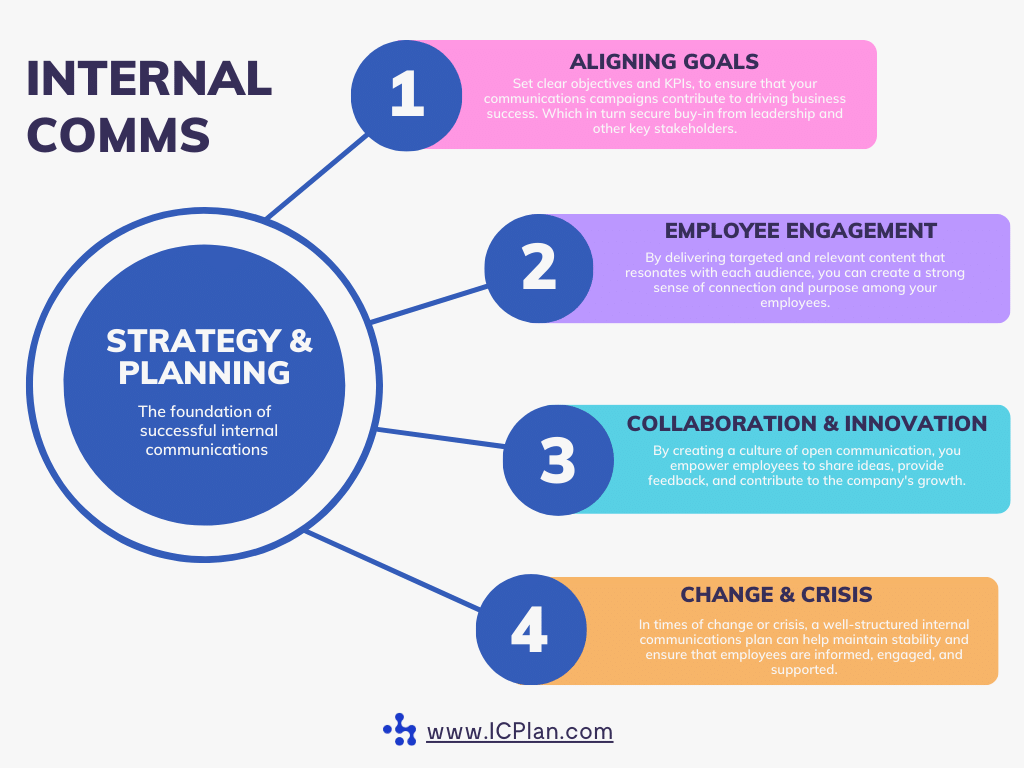

Tips for Creating Successful Internal Communications Campaigns
Develop a Comprehensive Strategy
To create a successful internal communications campaign, start by developing a comprehensive strategy that outlines your objectives, target audience, key messages, and desired outcomes. Ensure that your strategy aligns with the overall goals of your organisation and addresses the unique challenges of your internal communications landscape.
Use the Right Channels and Tools
Select the appropriate channels and tools for engaging with your audiences. Consider a mix of traditional channels (email, intranet, newsletters, townhalls) and modern tools (team collaboration platforms, social networks, mobile apps) to reach your diverse audience effectively. Make use of analytics to evaluate the effectiveness of each channel and adjust your approach as needed to optimize engagement and reach.
Personalise and Segment Communications
To increase the effectiveness of your messaging, personalise and segment your audience based on their needs and preferences. Create targeted content for different employee groups, considering factors such as job function, location, and seniority. This approach ensures that your messaging is relevant, engaging, and impactful. You can download our stakeholder mapping template here and adapt it to your needs.
Encourage Two-Way Communication
Successful internal communications campaigns foster two-way communication between employees and the organisation. Encourage feedback and open dialogue by providing channels for employees to ask questions, share ideas, and voice concerns. This not only helps to identify potential issues but also promotes a culture of transparency and trust.
Measure and Evaluate Success
Continuously measure the success of your campaigns by tracking key metrics, such as employee engagement, open rates, click-through rates, and feedback. Analyse this data to identify areas of improvement and refine your strategy for future campaigns.
Leverage Storytelling and Visuals
Engage your employees with compelling storytelling and visuals. Share success stories, case studies, and employee experiences to create an emotional connection with your audience. Use visuals, such as infographics, videos, and images, to make your content more engaging and memorable.
Train and Support Internal Communicators
Invest in the professional development of your internal communicators by providing training, resources, and support. This will help them stay current with best practices, improve their communication skills, and ensure the success of your internal communications campaigns. Get in touch if you would like to find out more about how our consultants can help.
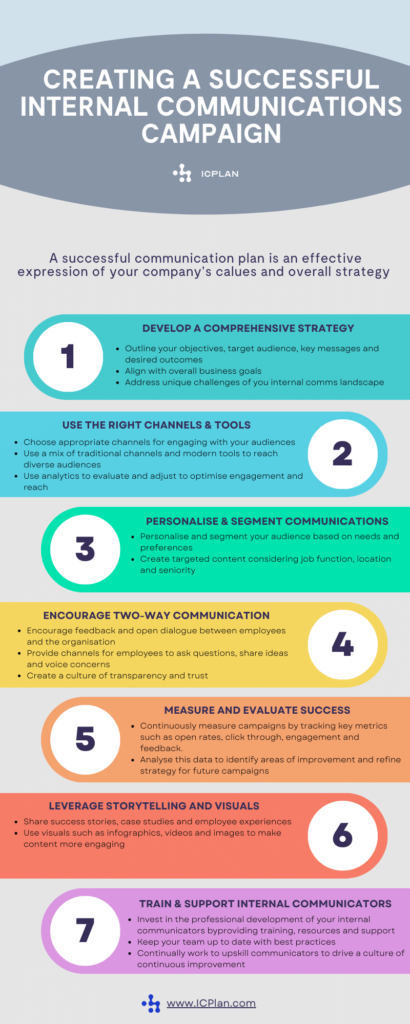

Conclusion
A successful internal communication plan is an effective expression of your company’s values and overall strategy whether it’s for the entire company or simply a part. It contains the elements of a solid understanding of the situation, a clearly defined set of actionable goals, a set means of delivery, and measurability. When you make time to set it up, making sure you’re informed by employee data, it can become an effective tool in your arsenal.



